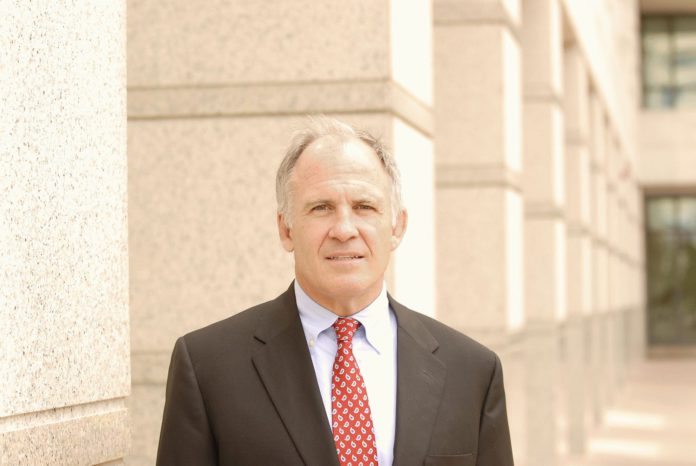
Although the #MeToo movement seems to have created a dramatic new era in dealing with sexual harassment, the topic isn’t a new one for the Colorado Supreme Court’s Office of Attorney Regulation Counsel and the committee overseeing professional conduct rules. While other states grapple with the issue, a Colorado discipline case from the 1990s, People v. Lowery, may continue to provide solid guidance for addressing harassment.
In 1995, a hearing board found that attorney Philip Lowery had engaged in inappropriate sexual conduct with female employees at his law firm and suspended him. The rule he violated prohibited “conduct that adversely reflects on the lawyer’s fitness to practice law,” and although that exact rule is now defunct, Burns Figa & Will shareholder Alec Rothrock said the case law established by People v. Lowery is still useful and has put Colorado ahead of many other jurisdictions, and even the American Bar Association, in addressing that type of conduct.
“I think the Lowery case would be the basis for discipline in a ‘#MeToo’ situation,” he said. “It’s a matter of degree, and other factors such as when the alleged harassment occurred, whether it would rise to the level of a disciplinary offense.”
Colorado’s Professional Conduct Rule 8.4 contains subsets that have the power to address harassment, such as 8.4(g), which prohibits biased conduct, or 8.4(h), which addresses intentional and wrongful harm to others that affects an attorney’s fitness to practice law. Rothrock said he believes that today, Rule 8.4(h) would cover the misconduct found in People v. Lowery.
Attorney Regulation Counsel Jim Coyle said the phrase “directly, intentionally, and wrongfully” is the key language in Rule 8.4(h), and its adoption increased the burden for finding a violation of the rule.
“(People v. Lowery) said we do not view a pattern of sexual misconduct with employees to be any less damaging to the legal profession than a lawyer’s sexual exploitation of a client,” he said, but added he couldn’t be sure whether the court would make the same conclusion under today’s rules
The ABA directly took on harassment and discrimination in 2016 by adopting Model Rule 8.4(g), which prohibits conduct “the lawyer knows or reasonably should know is harassment or discrimination on the basis of race, sex, religion, national origin, ethnicity, disability, age, sexual orientation, gender identity, marital status or socioeconomic status in conduct related to the practice of law.”
Holland & Hart partner Marcy Glenn, who chairs the Supreme Court’s Standing Committee on the Rules of Professional Conduct, said a subcommittee considered whether to adopt Model Rule 8.4(g) from the ABA, but last summer the committee voted not to make the change. She explained the members chose not to both because Colorado’s current iteration of 8.4(g) seems to have addressed discrimination well so far, and because the ABA’s rule has faced significant backlash since its adoption over concerns that it could infringe on lawyers’ rights and may be unconstitutional. Vermont has enshrined versions of it into their own professional conduct rules, and Glenn explained it seemed prudent to wait and see whether they face lawsuits to strike them down.
Rothrock explained professional conduct rules don’t need to specifically mention a particular type of conduct in order to govern it. In People v. Lowery, he said, the now-defunct rule violated by the attorney made no specific mention of harassment.
Rothrock postulated that adopting ABA Rule 8.4(g) in Colorado wouldn’t change the law of legal ethics as much as its adoption would in other jurisdictions because of the guidance provided by People v. Lowery.
Confidentiality of Investigations
Rule 251.31(b) of the Colorado Rules of Civil Procedure governs the confidentiality of disciplinary proceedings against attorneys, but gives the regulation counsel discretion to disclose some details in part if there is a need to protect the public, the administration of justice or the legal profession. Coyle said attorneys have to report criminal convictions to the OARC, but there is not a rule requiring them to disclose ongoing investigations against them to clients.
Rothrock took part in drafting the rule’s language giving a degree of discretion to the regulation counsel. He said though there is no silver bullet for addressing exceptions to confidentiality, he could envision a scenario in which the counsel might deem it necessary to disclose an ongoing harassment investigation against an attorney in order to warn new employees of the firm.
“I could see perhaps in some very serious circumstances, the regulation counsel warning, for example, new employees of a lawyer’s law firm that this lawyer has a propensity for engaging in that type of conduct,” he said.
Even with the usefulness of the Lowery case, Rothrock acknowledged the publicity given to current events such as the #MeToo movement can spur increased attention on their key issues within the legal field.
“It seems to me this #MeToo problem was something that was bound to happen someday,” Rothrock said. “And I don’t think that the legal profession is immune to that sort of scrutiny by any means.”
— Julia Cardi

